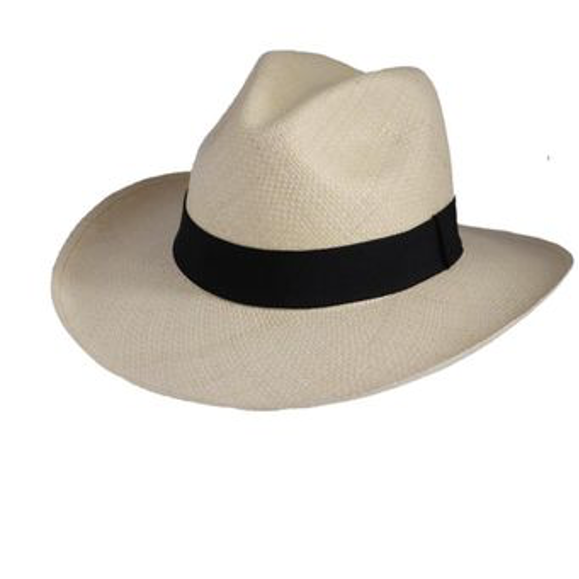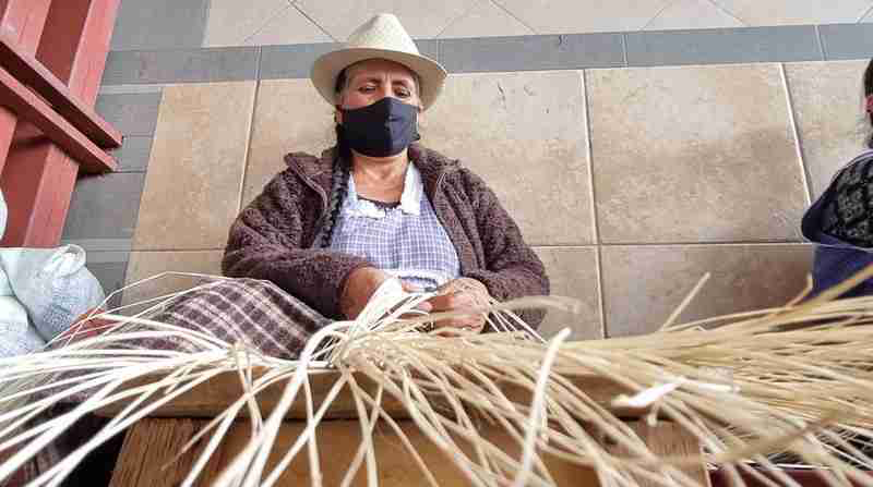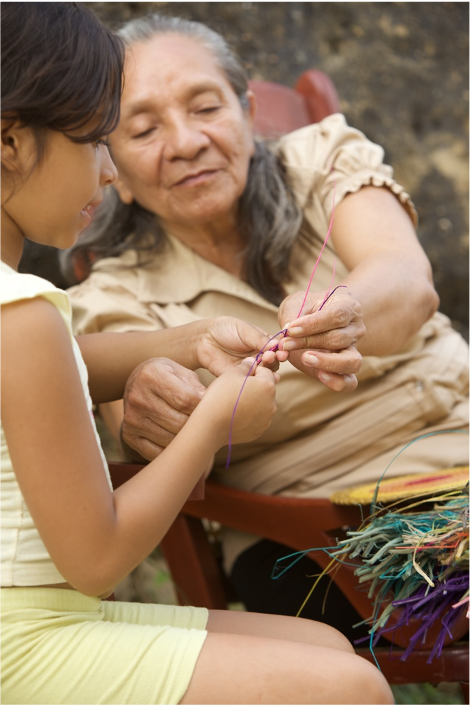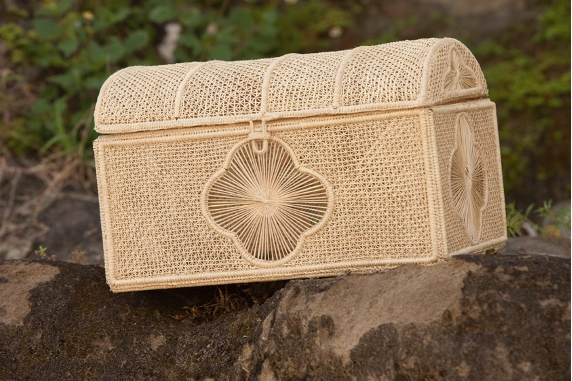Description
La iraca o paja toquilla “Carludovica palmata” planta nativa del continente americano, se utiliza en Nariño y otras regiones del país para la elaboración de múltiples objetos.
El oficio de la tejeduría llego a Colombia desde Ecuador. Sandoná, situado en las faldas del volcán Galeras es el principal centro manufacturero de sombreros que se conocen con distintos nombres como jipijapa o Panamá.
La iraca crece en climas templados y es cultivada por campesinos de la región quienes generalmente, realizan la recolección y preparación de la paja que debe ser sometida a un proceso de lavado y cocción, antes de empezar el tejido. De las hojas jóvenes se extraen los cogollos que se cortan en finas tiras y se usan como hilos para tejer.
La artesana tejedora usa elementales utensilios, un soporte de madera de tres patas (rueca) con un plato o disco que sirve de apoyo inicial, una horma de madera se coloca sobra la rueca y sirve para moldear la copa del sombrero, el tejido se inicia en la parte plana de la copa y se van entrecruzando las pajas en forma de sarga o damero, los elementos de la trama pasan por encima y por debajo de la urdimbre.
A medida que se avanza en el tejido de la copa se van añadiendo tiras para aumentar el tamaño y dar forma al ala del sombrero. Al finalizar el tejido los sobrantes se cortan y la pieza se remoja y se somete al humo de azufre para blanquearla; se maja con un mazo de madera para alizar la superficie, se horma y se plancha. Además del sombrero, se elaboran otros artículos con el fin de ampliar el mercado, tales como bolsos, cestas, individuales, cajas y otros.
Junto con Sandoná existen otros centros sombrereros importantes como Aguadas, Caldas y Suaza, Huila. En Usiacurí, Atlántico se utilizan estructuras de alambre que sirven de bastidores a los que se cosen los hilos de iraca para formar encajes y puntadas de distintos diseños.
Se producen cajas y cofres, paneras, lámparas y una variedad de artículos en su distintivo color blanco. Los sombreros de Sandoná, Suaza y Aguadas cuentan con Denominación de Orígen. En la actualidad cerca de 1000 artesanas se dedican a la tejeduría de sombreros en los tres departamentos.
Bibliografia
Duque, Duque, C. Maestros del Arte Popular Colombiano – suramericana. Editorial: Panamericana. (2010).
I/M Editores. OFICIOS las artesanías colombianas. Editorial: Imprelibros S.A. (2005).
Solano, P. LA IRACA comunidad artesanal de Sandoná. Artesanías de Colombia. Litografía Arco. (1997).
english
The weaving of Iraca fibres
The “iraca” or “paja toquilla” (Carludovica palmata) native plant of the American continent, is used in Nariño and other regions of the country for the elaboration of multiple objects. The weaving trade came to Colombia from Ecuador. Sandoná, located in the foothills of the Galeras volcano, is the main manufacturing centre for hats known by different names such as “jipijapa” or Panama.
The “iraca” grows in temperate climates and is cultivated by peasants of the region who generally collect and prepare the straw, which must be washed and cooked before weaving begins. From the young leaves, the buds are extracted and cut into thin strips and used as threads for weaving.
The weaver uses elementary tools, a three-legged wooden ”rueca” with a plate or disc that serves as a starting support, a wooden fork is placed on the distaff and is used to mould the hat crown, the weaving begins on the flat part of the crown and the straws are interwoven in the form of a ”twill” or ”damero”, the weft elements pass over and under the warp.
As the weaving progresses, strips are added to increase the size and shape of the brim of the hat. When the weaving is complete, the excess is cut off and the piece is soaked and subjected to sulphur smoke to whiten it. It is ground with a wooden mallet to smooth the surface, shaped and ironed. In addition to the hat, other articles are made in order to expand the market, such as bags, baskets, placemats, boxes and others.
In addition to Sandoná, there are other important hat-making centres such as Aguadas, Caldas and Suaza, Huila. In Usiacurí, Atlántico, wire structures are used as frames to which the iraca threads are sewn to form laces and stitches of different designs. Boxes and chests, bread baskets, lamps and a variety of items are produced in their distinctive white colour. The hats of Sandoná, Suaza and Aguadas have a Denomination of Origin. At present about 1000 craftswomen are dedicated to hat weaving in the three departments.





Reviews
There are no reviews yet.